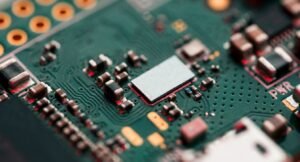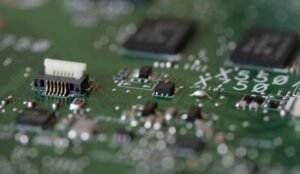AI Model vs AI System
Artificial Intelligence (AI) has revolutionized numerous industries, aiding in automation and decision-making processes. Two important components of AI are AI models and AI systems. While these terms are often used interchangeably, they represent distinct concepts that are crucial to understanding AI technology.
Key Takeaways:
- AI models are algorithms that learn from data to perform specific tasks.
- AI systems are operational implementations of AI models within a larger framework.
- AI systems require infrastructure to support data processing, model training, and deployment.
- AI models are often trained using machine learning techniques.
- Effective AI systems require thorough testing, monitoring, and maintenance.
AI models, such as deep neural networks or decision trees, are specific algorithms constructed to learn and make predictions or decisions based on data. These models are created through a process called training, where they are exposed to large datasets and learn patterns, relationships, and relevant features. *The training process allows AI models to generalize from the data and make predictions on unseen examples based on their learned knowledge.* AI models are typically designed to perform individual tasks, such as image classification or sentiment analysis.
AI systems encompass not just the AI models, but all the supporting infrastructure required to deploy and operate these models at scale. An AI system includes the hardware, software framework, data storage, and computation power necessary to process large volumes of data and train AI models effectively. These systems also handle model deployment, real-time inferencing, and ongoing monitoring and maintenance. *AI systems often involve complex pipelines and distributed computing resources to handle the computational demands of training and serving models at scale.*
AI Model vs AI System: A Comparison
| Aspect | AI Model | AI System |
|---|---|---|
| Definition | An algorithm that performs a specific task based on learned knowledge. | The infrastructure and tooling supporting the deployment and operation of AI models. |
| Scope | Focuses on performing individual tasks, such as classification or prediction. | Encompasses the entire framework supporting AI model deployment and operation. |
| Functionality | Processes input data and generates predictions or decisions based on learned knowledge. | Handles data processing, model training, deployment, real-time inferencing, and maintenance. |
The comparison table above highlights the main differences between AI models and AI systems. While AI models focus on performing specific tasks with learned knowledge, AI systems provide the necessary infrastructure for deploying and operating these models.
AI systems are essential for bringing AI models into real-world applications. They facilitate the integration of AI models within existing software systems and ensure their scalability and reliability. *With the increasing complexity and scale of AI deployments, AI systems play a crucial role in managing resources and delivering efficient solutions.*
Challenges in AI System Development
- Managing computational resources for training and inferencing.
- Ensuring data privacy and security in AI systems.
- Maintaining model performance and accuracy over time.
- Handling data quality and bias issues.
- Monitoring and interpreting model behavior for transparency and fairness.
Developing and maintaining AI systems come with a set of challenges that require careful consideration. Some of these challenges include managing computational resources, ensuring data privacy and security, maintaining model performance, handling data bias, and monitoring model behavior. *Addressing these challenges is crucial for building robust and trustworthy AI systems.*
Conclusion
In summary, although AI models and AI systems are intertwined, they represent distinct components of AI technology. AI models are algorithms that learn from data to perform specific tasks, while AI systems encompass the infrastructure and tooling supporting the deployment and operation of AI models. Developing efficient AI systems is critical for successfully implementing AI technology in various industries.

Common Misconceptions
AI Model vs AI System
When it comes to artificial intelligence (AI), there are often misconceptions surrounding the terms “AI model” and “AI system.” These terms are sometimes used interchangeably, but they actually refer to different things.
- An AI model is the algorithm or mathematical model that is trained on a specific dataset to perform a specific task. It is the core component of an AI system.
- An AI system, on the other hand, refers to the entire infrastructure and architecture that supports the AI model. It includes data storage, processing power, and the necessary software and hardware components.
- Misconception: People often assume that an AI model and an AI system are the same thing, but they are distinct concepts within the field of AI.
Another common misconception is that AI models are always accurate and infallible. However, this is not the case.
- AI models are trained on data, and their accuracy heavily depends on the quality and representativeness of the data they are trained on. If the data is biased or incomplete, the AI model can also replicate these biases.
- Additionally, AI models are limited by the scenarios and conditions they were trained on. They may struggle to handle unfamiliar or unexpected situations.
- Misconception: Many people believe that AI models are always foolproof, but they have limitations and can produce incorrect or biased outputs.
Some individuals wrongly assume that AI systems can replace human intelligence and judgment entirely.
- While AI systems can automate repetitive tasks and process vast amounts of data quickly, they lack human intuition, creativity, and contextual understanding.
- Furthermore, AI systems are only as good as the data and instructions given to them, and they cannot inherently understand real-world complexities or adapt to new situations like humans can.
- Misconception: It is important to understand that AI systems cannot fully replace human intelligence and judgment; they are meant to assist and augment human decision-making.
Sometimes, people mistakenly believe that AI models and systems are infallible and free from bias or discrimination.
- However, AI models can inherit the biases present in the data they are trained on, which can lead to biased outcomes and discrimination.
- For example, if an AI model is trained on historical hiring data that is biased against certain demographic groups, it can perpetuate that bias in its recommendations.
- Misconception: AI models and systems can inadvertently perpetuate bias and discrimination if not properly designed, validated, and monitored.
Finally, individuals may wrongly assume that AI models and systems can function autonomously without human intervention or oversight.
- In reality, AI models and systems require continuous monitoring and human intervention to ensure their performance, accuracy, and ethical implications.
- Human oversight is necessary to identify errors or biases, make necessary adjustments, and ensure alignment with ethical standards and legal requirements.
- Misconception: AI models and systems cannot operate entirely on their own but need constant human supervision and intervention.

In the ever-evolving landscape of artificial intelligence (AI), the distinction between an AI model and an AI system plays a crucial role. While an AI model refers to the underlying algorithm and mathematical representation, an AI system encompasses the broader infrastructure and components that enable the model’s deployment and execution. This article delves into 10 captivating illustrations that highlight the differences and significance of these two entities.
1. Model Complexity vs. System Scalability:
This table showcases the varying levels of complexity for different AI models and the corresponding scalability of AI systems required to accommodate them. It emphasizes that more sophisticated models demand substantial system resources for optimal performance.
2. Training Time:
Here, we explore the training duration required for distinct AI models. It reveals that complex models necessitate longer training periods to extract valuable patterns and insights from vast datasets.
3. Inference Speed:
The comparison of different AI systems’ inference speed demonstrates their efficiency in processing real-time data. Faster inference speeds enable quicker decision-making and response times in various applications.
4. Resource Utilization:
By examining the resource utilization of AI models and systems, this table exposes the varying hardware and computational demands. It highlights the significance of efficient resource allocation for optimal performance.
5. Model Accuracy vs. System Deployment:
This illustration showcases the relationship between model accuracy and system deployment. It reveals that deploying cutting-edge models may require tuning system configurations to manage resource allocation effectively.
6. Data Input Requirements:
Here, we explore how AI models and systems handle diverse forms of data input. It highlights the adaptability of AI systems to accommodate various data types, influencing the selection of the model suitable for a specific task.
7. Model Maintenance Effort:
This table emphasizes the involvement of systems in model maintenance and updates. It reveals that AI systems play a crucial role in ensuring the continuous enhancement and optimization of AI models.
8. Model Portability:
By examining the portability of AI models across different systems, this comparison reveals the challenges and compatibility issues associated with migrating models between platforms.
9. System Reliability:
This illustration highlights the reliability of AI systems in supporting models during deployment. It stresses the importance of robust systems to ensure consistent and accurate AI predictions.
10. System Integration:
The final table explores the integration capabilities of AI systems with existing infrastructure. This aspect underscores the seamless incorporation of AI systems into diverse applications and workflows.
In conclusion, understanding the distinctions and interplay between AI models and systems is pivotal for harnessing the full potential of AI technology. The tables presented in this article shed light on various aspects of model-system dynamics, providing valuable insights into their influence on performance, scalability, and practical implementation. By comprehending the intricate relationship between AI models and systems, organizations can effectively leverage AI technology to drive innovation and achieve transformative results.
Frequently Asked Questions
What is the difference between an AI model and an AI system?
An AI model refers to a specific algorithm or mathematical representation that is trained to perform a specific task, such as image recognition or natural language processing. On the other hand, an AI system encompasses the model along with the necessary infrastructure, data pipelines, and software components required to deploy and operate the model efficiently in real-world applications.
How does an AI model work?
An AI model works by being trained on a large amount of data, called training data, which contains examples of the problem it needs to solve. The model learns patterns and correlations from this data and uses them to make predictions or take actions when provided with new input. The process of training involves optimizing the model’s parameters to minimize the difference between its predictions and the ground truth.
What components make up an AI system?
An AI system consists of multiple components, such as the AI model itself, data storage and retrieval systems, preprocessing pipelines, inference engines, and application interfaces. Additionally, hardware infrastructure, such as GPUs or specialized AI chips, might be required to accelerate the computations. These components work together to enable the deployment and operation of the AI model in real-world scenarios.
How do AI models and systems benefit businesses?
AI models and systems bring various benefits to businesses, including automation of repetitive tasks, improved customer experience through personalized recommendations, enhanced decision-making based on data insights, increased efficiency and productivity, and the potential for innovation and competitive advantage. By leveraging AI, businesses can streamline processes, optimize resource allocation, and unlock new revenue opportunities.
What are some limitations of AI models and systems?
AI models and systems have certain limitations, such as the dependence on high-quality and diverse training data for optimal performance, vulnerability to adversarial attacks that manipulate the input to mislead the model, potential biases in the training data that can lead to unfair decisions, the need for continuous monitoring and updating to adapt to changing conditions, and ethical considerations related to privacy, transparency, and accountability.
How do AI models and systems handle privacy and security concerns?
Privacy and security concerns are crucial in the development and deployment of AI models and systems. Measures such as data anonymization, encryption, access controls, and secure data storage are implemented to protect sensitive information. Additionally, rigorous testing and validation processes are used to ensure that the AI system doesn’t inadvertently leak or misuse user data. Compliance with privacy regulations and industry best practices is paramount.
Can AI models and systems be biased?
Yes, AI models and systems can be biased. Bias can arise from the training data if it reflects existing societal biases or if it lacks diversity. Biased training data can result in discriminatory outcomes or reinforce existing biases when used to make decisions. It is essential to address bias in AI models and systems through careful data curation, fairness-aware algorithms, and regular evaluation to mitigate any unintended consequences.
How do AI models and systems interact with humans?
AI models and systems can interact with humans through various interfaces, such as chatbots, voice assistants, recommendation systems, or user interfaces in applications. These interfaces enable users to provide input, receive outputs, and interact with the AI system. Additionally, human-in-the-loop approaches allow humans to provide feedback and correct the model’s predictions, improving its performance and ensuring collaboration between AI and human intelligence.
What are some real-world applications of AI models and systems?
AI models and systems have found applications in various domains, including healthcare, finance, manufacturing, transportation, customer service, marketing, and entertainment. Examples include disease diagnosis, fraud detection, autonomous vehicles, personalized product recommendations, language translation, and content generation. The versatility and potential of AI models and systems make them valuable across many industries and sectors.
What is the future outlook for AI models and systems?
The future of AI models and systems is expected to bring advancements in various areas, such as deep learning, reinforcement learning, natural language understanding, and explainability. As AI continues to evolve, there will be a greater focus on transparency, interpretability, and ethical use of AI systems. Additionally, widespread adoption across industries and the development of industry-specific AI models are likely to shape the future landscape of AI.




